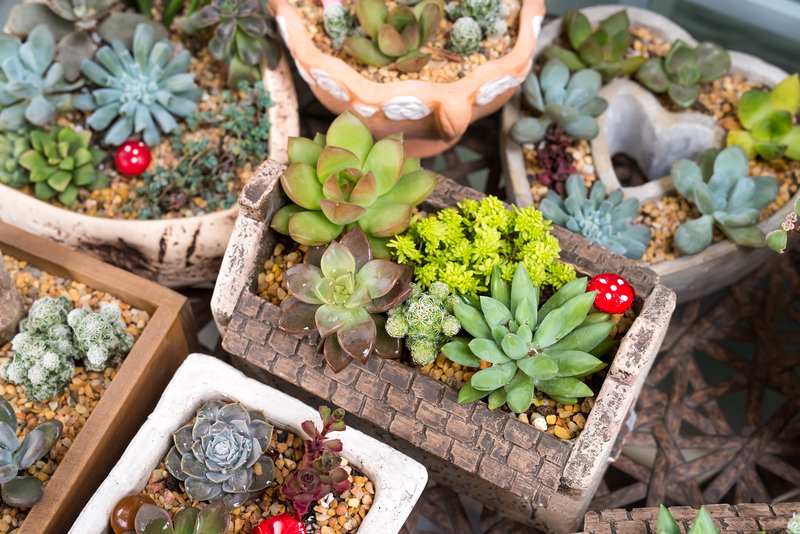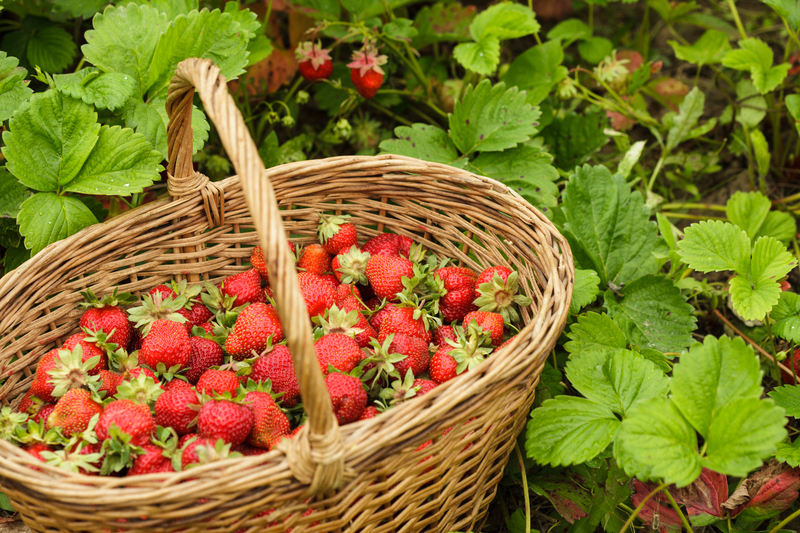Prepare Your Garden Plants for Cold Weather Survival
Posted on 07/09/2025
Prepare Your Garden Plants for Cold Weather Survival: A Comprehensive Guide
As temperatures drop and frosty nights arrive, gardeners everywhere are faced with an urgent task: preparing their beloved plants for the harsh realities of winter. In this in-depth guide, we'll explore the most effective strategies to help your garden plants survive--and even thrive--during cold weather. By integrating expert-recommended practices, you can create a resilient, vibrant garden that weathers winter's worst.

Why Preparing Plants for Cold Weather is Crucial
Seasonal changes can be dramatic and unforgiving to unprotected plants. Cold snaps, frost, snow, and freezing winds can severely damage or kill delicate foliage, roots, and stems. Many plants enter dormancy in winter, conserving energy until spring returns. However, some species require proactive protection to ensure survival.
Top Reasons to Winterize Your Garden
- Protects plant health through the coldest months
- Keeps root systems from freezing
- Preserves perennials and tender annuals
- Prevents pest infestations that prey on weakened plants
- Increases flowering and harvest success next season
Understanding Your Local Climate
Before you begin, it's essential to know your growing zone, average first and last frost dates, and common winter weather patterns. This information will help you select suitable cold-hardy plants and plan timely protection.
Check USDA Hardiness Zone
- Identify your USDA Plant Hardiness Zone--found on the USDA website
- Research which perennials, shrubs, and trees are best suited for your area
- Know the lowest expected winter temperatures for your garden each season
Choose Resilient, Cold Weather-Friendly Plants
If you're planning ahead, or redesigning your garden, consider including varieties known for their cold-weather resilience. Evergreens, certain perennials, and winter-hardy vegetables are excellent choices for challenging climates.
Recommended Cold-Tolerant Plants
- Evergreen shrubs: Boxwood, juniper, holly
- Perennials: Hellebore, sedum, coneflower
- Vegetables: Kale, spinach, garlic, Swiss chard
- Bulbs: Tulips, daffodils, hyacinths
Essential Steps to Prepare Your Garden for Winter Weather
1. Mulching: Mother Nature's Insulation
Mulch acts like a warm blanket, trapping heat and moisture in the soil. It helps keep root systems from freezing and prevents temperature extremes from damaging plants.
- Apply 2-4 inches of organic mulch (such as straw, shredded leaves, or wood chips) around the base of perennials, shrubs, and trees
- Keep mulch away from direct contact with stems to prevent rot
- Replenish mulch as needed after storms or heavy winds
2. Water Wisely Before Freeze
Hydrated plants have a better chance of surviving the coldest weather conditions. Water acts as an insulator, helping protect roots from frost.
- Water deeply before the ground freezes, especially if autumn has been unusually dry
- Reduce watering once the soil is frozen to avoid root rot
- For container plants, ensure pots drain well to prevent standing water
3. Pruning: Timing Matters
Proper pruning helps plants focus their energy on healthy growth. However, the timing is crucial when preparing for cold weather.
- Prune dead, diseased, or damaged branches in late fall
- Avoid heavy pruning of most species right before winter to prevent stimulating new growth
- Some trees and shrubs--especially spring bloomers--should not be pruned until after flowering
4. Protect Sensitive and Tender Plants
Some plants simply cannot withstand freezing temperatures. These need extra protection, or even relocation indoors.
- Cover small plants and ground covers with burlap, frost cloth, or horticultural fleece during cold snaps
- Use cloches, cold frames, or moveable greenhouses for young or delicate vegetables
- Bring potted tropicals and houseplants indoors before the first hard frost
How to Shield Shrubs and Trees from Winter Damage
Shrubs and young trees are especially vulnerable to freezing winds, frost, ice buildup, and animal damage. Take these additional precautions:
- Wrap trunks of young trees in tree guards or burlap to prevent sunscald and rodent chewing
- For broadleaf and flowering evergreens, create a burlap screen on the windward side to reduce desiccation
- Gently shake off excess snow--heavy loads can snap branches
- Remove ice carefully; hitting or knocking limbs may cause severe damage
Dealing with Salt and Chemicals
Salt used to deice roads and walkways can leach into garden soil and harm plant roots. Protect your landscape by:
- Using alternatives like sand, sawdust, or kitty litter on icy walks near plants
- Creating barriers with landscape fabric or burlap to block salt spray
- Watering thoroughly in spring to flush residual salts from soil
Special Care for Container Plants
Plants in pots or containers are at greater risk from freezing because their roots are more exposed. Here's how to give them the best chance of surviving winter:
- Move pots to sheltered locations, such as against a south-facing wall or inside an unheated garage
- Insulate containers with bubble wrap, burlap, or even mounded leaves
- Use larger, thick-walled pots to help buffer against temperature swings
- Water before a freeze, but ensure containers drain completely
Preparing Vegetable Gardens for Cold Weather Survival
If you love fresh produce, you can extend your garden's productivity well into the icy season with a few smart steps:
- Plant cold-tolerant crops: Spinach, carrots, leeks, and arugula actually get sweeter after a light frost
- Use row covers or low tunnels to hold in warmth and protect leafy greens
- Mulch heavily around root crops like parsnips and beets for easy overwintering
- Start a cold frame for salad greens and herbs that would otherwise perish
- Clean up spent annuals to prevent disease and pests from overwintering
When and How to Apply Anti-Desiccant Sprays
Many evergreens suffer winter burn due to moisture loss through their leaves. Anti-desiccant sprays form a protective barrier, reducing water evaporation:
- Apply in late fall when temperatures are above freezing
- Repeat as needed during extended warm spells
- Never use on plants actively growing or stressed from drought
Enrich the Soil for Spring Success
Late fall is the perfect time to amend your garden soil and give your plants a head start for spring. As part of your garden winterization plan, consider:
- Adding well-rotted compost or manure to garden beds
- Tilling in organic material for improved drainage and nutrient retention
- Testing soil pH and making necessary adjustments (lime or sulfur)
Bonus Tips for Cold Weather Garden Survival
1. Set Up Windbreaks
- Plant dense hedges or install temporary screens to block icy winds
2. Minimize Foot Traffic
- Frozen turf and beds are fragile. Walking on them can compact soil and damage roots
3. Label Plants
- Use weatherproof tags so you remember which plants require extra attention each season
4. Review and Replenish Garden Tools
- Clean, sharpen, and store tools before the snow flies to extend their life and prevent rust

Frequently Asked Questions about Cold Weather Plant Survival
What temperature kills most garden plants?
Temperatures below 28?F (-2?C) can damage tender annuals, while many perennials and shrubs tolerate much colder conditions if properly protected.
Can I use household items to protect plants from frost?
Yes! Old sheets, blankets, cardboard boxes, and plastic bins can serve as temporary covers for unexpected cold snaps.
When is it safe to uncover plants for spring?
Wait until all danger of frost has passed and nighttime temperatures remain consistently above 40?F (4?C) before removing blankets and mulch.
Conclusion: Ensuring Your Garden Flourishes Year-Round
Preparing your garden plants for cold weather survival is more than a precaution--it's an investment in your landscape's vitality, beauty, and productivity. By understanding your local climate, choosing resilient species, and implementing the protective steps outlined above, you're setting your plants up for robust health throughout winter and into the next growing season.
Remember, winter is a time of rest in the garden--but with the right care, your plants will be ready to burst forth with new life come spring. Start winterizing your garden today, and enjoy the rewards long after the coldest nights have passed.



